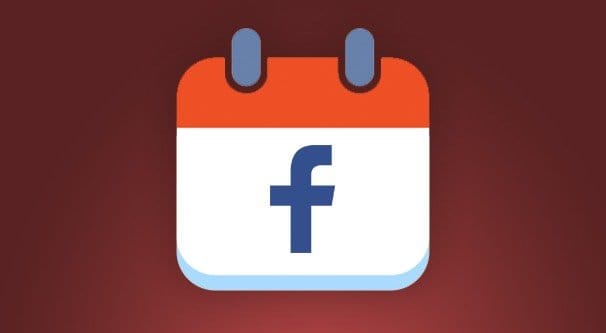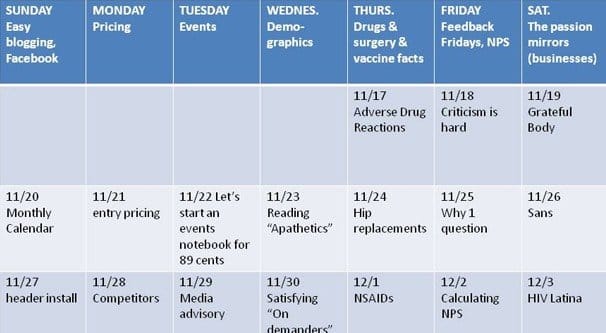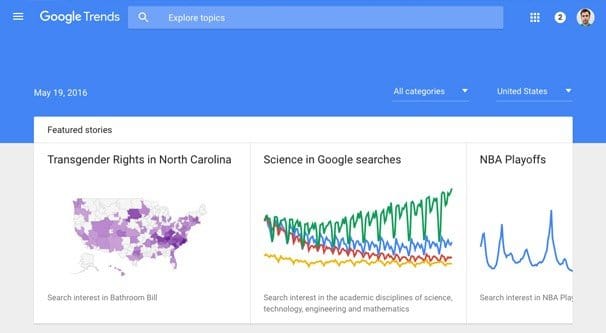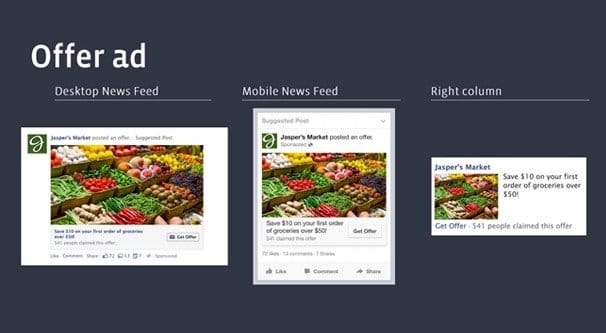 Written by ContentPowered.com
Written by ContentPowered.com
The art of posting content on your social media pages is a tricky one to master. You have to share enough content to be seen, but not so much that you’re demoted for spamming people. You have to share content that your users will find interesting, but it can’t all be your own content, because then you seem too self promotional. You can’t do a lot of advertising without a lot of other content in between, but you can’t let that other content overrule what you’re posting about yourself.
What I’m hoping to do with this post is help you establish ground rules for what you should and shouldn’t post, how often you should post various types of content, and where you can find that content. Ideally, by the time we’re done here, you’ll have a template calendar you can fill in with content from various sources you’ve accumulated.
A Calendar Framework
The first thing to recognize is that what we’re going to create is an editorial calendar. This is very much like any sort of editorial or content calendar you have for your blog, so you can happily integrate the two together if you wish. You can have stand-alone calendars or one overall plan, depending on the workflow and the team you have on each aspect of your marketing.
Your calendar will essentially be a visual layout of the types of content you’re posting, and once you’re getting close to the dates in question, the specific posts you’ve created and have scheduled. Remember, though, that this isn’t all set in stone. You’re free to adjust the placement of content as you need, squeezing in a more timely post or announcement if need be. For the most part, your specific timing should be set; it’s the content that is variable.
So how often should you post to Facebook? Some of the most recent studies courtesy of Hubspot indicate that it doesn’t really matter as long as you’re under 10,000 followers. Once you’ve grown to that point, posting more often gives you a higher number of clicks per post.
I recommend posting once each weekday as a good baseline. You can grow from there, but anything less and you’re going to risk your posts falling into the aether and slipping past your followers. Once per weekday, or five times per week, is a good minimum to establish a content flow while also providing enough content to help you grow when something goes viral. It gives you weekends as flex time as well, so if you need to cram in another post, you can.
With five posts per week, it makes sense to go on a base 10 scale for the kinds of content you post. I like the 1-1-3 (or the 1-3-6) scale. I’m going to operate on a two-week basis, or 10 posts, to make the math easier.
The 1-3-6 scale is a way of dividing up the number of posts you make and assigning them specific types of content. It looks something like this.
- Out of 10 posts per period, 1 will be a highly focused marketing message, something designed to get people to a landing page or to buy a product.
- Out of 10 posts per period, 3 will be soft sells. These are posts that include your content or promote your brand without being overly promotions. Think sharing blog posts, not promoting products.
- Out of 10 posts per period, 6 will be curated content from other sources. This is me sharing posts from Moz, Hubspot, Jon Loomer, or any of the other big names. It’s content I didn’t produce, but that I think my followers might like.
I’m bringing value to the table by aggregating the best of the best in one place, and peppering my content in along with it. Curated content is going to be one of your primary sources of content, and that’s fine! It’s not theft, since you’re sharing the content of other bloggers with full attribution and no airs towards collusion.
Curated content is important for growing your relationships with the big names in your industry as well. By sharing their content, you earn a bit of notice and gratitude from them. By linking to them in your own content and notifying them, you get some additional notice, and all of this recognition builds up over time. Influencers will start to recognize you and will be more likely to consider you a decent or trustworthy source, since you’re so happily sharing their content.
As with other aspects of the calendar, the 1-3-6 split is flexible. Want to do more curation? 1-2-7 is fine. Need to hard sell something quick? 3-1-6 can work just fine for a short time. Don’t over-do it and you’ll be fine. Adjust your content distribution as you see fit, and let your users decide what the right balance is.
Plug in slots in your calendar to be filled by each type of content. Determine that, for example, every second Wednesday is hard sell day. Every Monday is your own content, with additional content every other Tuesday. The rest is curated. Or perhaps you’re curating content and posting your own content at the same time, and you’re posting twice per day. It’s really up to you to adjust it to make it feel right for your audience. Shuffle things around and test them to see how well your audience responds to different kinds of content on different days.
Sources of Curated Content
Assuming you’re doing a 10-post cycle and that 6 of those posts are curated content, you can further break them down. I like a 3-3 split of timely, trending content and evergreen value. What do I mean?
Timely, trending content is content you grab at the last minute. It’s something that Moz posted that has hit the big time with shares. It’s something that has gone viral, or is about to go viral. It’s a wave of traffic and interest you can share with your audience, both to capture the people who haven’t seen it and to converse with those who have. More on this later.
The other part, the evergreen value, is content that may not be posted in the last week, but is pretty good and valuable nonetheless. It’s content that works as a reference or a guide for your users, something they can make use of throughout the coming weeks and months.
Still, the question remains; where do you find that content, and how do you go about curating it? There are a few places you can look for content, but one thing to keep in mind is that you need a variety of sources. You can’t curate everything one brand does, or you’re just an aggregator. You need to be selective, which means you need enough sources that there’s always valid content to curate.
- The big name blogs are one great sources. In the SEO industry, for example, you can go with giants like Moz, businesses like Hubspot and PostPlanner, service providers like HootSuite and SproutSocial, or even industry watchdogs like SearchEngineJournal and SEO Roundtable. This will be your biggest source of content, but the drawback is that the content will often be popular already, so you have to put a lot of energy into making sure you bring something to the table. More on that later.
- Another great source is research performed by other entities. This could be the big names above, but it could also be research centers or smaller brands looking to get their name out there by providing data sources. Just remember that you need data you can add commentary to for additional value.
- Content posted in your comments isn’t always going to be valuable – in fact, it’s often spam – but sometimes it will lead to good topics you can research, or good content you can curate. Don’t ignore them entirely out of habit.
- Monitoring aggregators, particularly aggregators of content that include mid-tier sources, gives you the option to take posts from businesses on your level and respond to them, which gives you a much more direct comparison between your perspective and theirs. I might not compare to Moz, but I can certainly compare 1:1 with another smaller business.
One running theme is that no matter what content you’re curating, you need to bring value to the table. You need to add something on to the post, major or minor, so that your users have a reason to be following you rather than just the people you’re curating from.
When you’re curating pure data, for example, you can add on your own analysis. You can bring up your perspectives in blog posts or lengthier social media posts. On the other hand, curating a post from a big name blog that does their own analysis gives you less room for analysis of your own. Instead, you can just bring up additional questions based on their conclusions. The concept here being “take it one step further.”
One of my favorite techniques is to take an opinion-based piece you think would be valuable, and to write about the opposite opinion. Treat it as a thought experiment and see if you can argue for the other side and point out bias, or if you’re going to encounter evidence walls and come to the same conclusions. It’s fun!
What about your own content that you add in to the editorial calendar? Facebook doesn’t do a good job supporting multiple posts of the same content, so you’re mostly limited to one post per blog article. However, you can often hard-sell more important posts when they come up, using additional slots for the topic. This is where paid promotion can really help; use a cheap oCPM model and pay for views to your most attractive post in a given month.
I’m assuming here that you already have a lot of thought put into running your blog, and that promoting it on Facebook is a priority. I’m also assuming that you’re not necessarily posting on your blog every day. If you are, you’re going to have to bump up your Facebook posting numbers, possibly to two or three times per day. This is so you can keep up the stream of curated content without flooding yourself with just your own content.
Facebook Exclusives
One additional thing you can share on Facebook to give it added value and get people to stick around is the Facebook exclusive content. Contests are typically the first thing suggested here, though many social media contest apps like Gleam allow entries from a wide range of different networks. Using the Facebook native offer claims ad type is a good idea as well, though obviously as an ad it will require a budget.
The point of this type of content is to incentivize people following you on Facebook and keeping up with your posts, when they otherwise might not. When you provide something of tangible value beyond just blog posts, you start to establish that incentive.
There are certainly some types of content you shouldn’t be posting to a business page. Obviously, you should avoid posting the banal every day lifestyle content like meal pictures, daily routines, or personal stories unless they’re relevant to your brand image. Other than that:
- Avoid posting rants. Facebook business pages are not the appropriate place to let loose on your feelings about any subject, because it drives away fans and distracts from your marketing. Worse, particularly vitriolic rants can get you a lot of negative attention, possibly on a national scale.
- Anything negative about anyone. Negative feelings tend to dampen engagement and you can stir up a lot of controversy. Worse, you might say something that could be construed as racist/ablest/sexist or otherwise slanderous.
- Any sort of personal information. Even if you have an employee with an important announcement, chances are it’s not appropriate for the business stage.
Strive to be professional and maintain your image and persona. Every post is working towards building an audience, not tearing anyone down.



